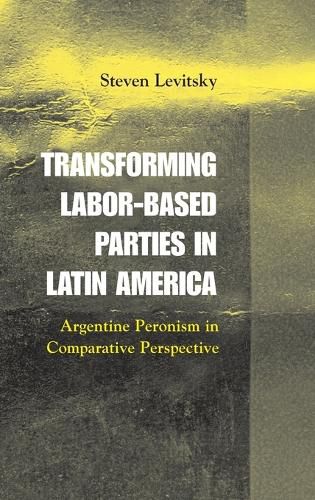Readings Newsletter
Become a Readings Member to make your shopping experience even easier.
Sign in or sign up for free!
You’re not far away from qualifying for FREE standard shipping within Australia
You’ve qualified for FREE standard shipping within Australia
The cart is loading…






Why did some Latin American labor-based parties adapt successfully to the contemporary challenges of neoliberalism and working class decline while others did not? Drawing on a detailed study of the Argentine Peronism, as well as a broader comparative analysis, this book develops an organizational approach to party change. Levitsky’s study breaks new ground in its focus on informal and weakly institutionalized party structures. It argues that loosely structured party organizations, such as those found in many populist labor-based parties, are often better equipped to adapt to rapid environmental change than are more bureaucratic labor-based parties. The argument is illustrated in the case of Peronism, a mass labor-based party with a highly fluid internal structure. The book shows how this weakly routinized structure allowed party reformers to undertake a set of far-reached coalitional and programmatic changes that enabled Peronism to survive, and even thrive, in the neoliberal era.
$9.00 standard shipping within Australia
FREE standard shipping within Australia for orders over $100.00
Express & International shipping calculated at checkout
Why did some Latin American labor-based parties adapt successfully to the contemporary challenges of neoliberalism and working class decline while others did not? Drawing on a detailed study of the Argentine Peronism, as well as a broader comparative analysis, this book develops an organizational approach to party change. Levitsky’s study breaks new ground in its focus on informal and weakly institutionalized party structures. It argues that loosely structured party organizations, such as those found in many populist labor-based parties, are often better equipped to adapt to rapid environmental change than are more bureaucratic labor-based parties. The argument is illustrated in the case of Peronism, a mass labor-based party with a highly fluid internal structure. The book shows how this weakly routinized structure allowed party reformers to undertake a set of far-reached coalitional and programmatic changes that enabled Peronism to survive, and even thrive, in the neoliberal era.